BPYO - Rehearsal no. 10 - Recap
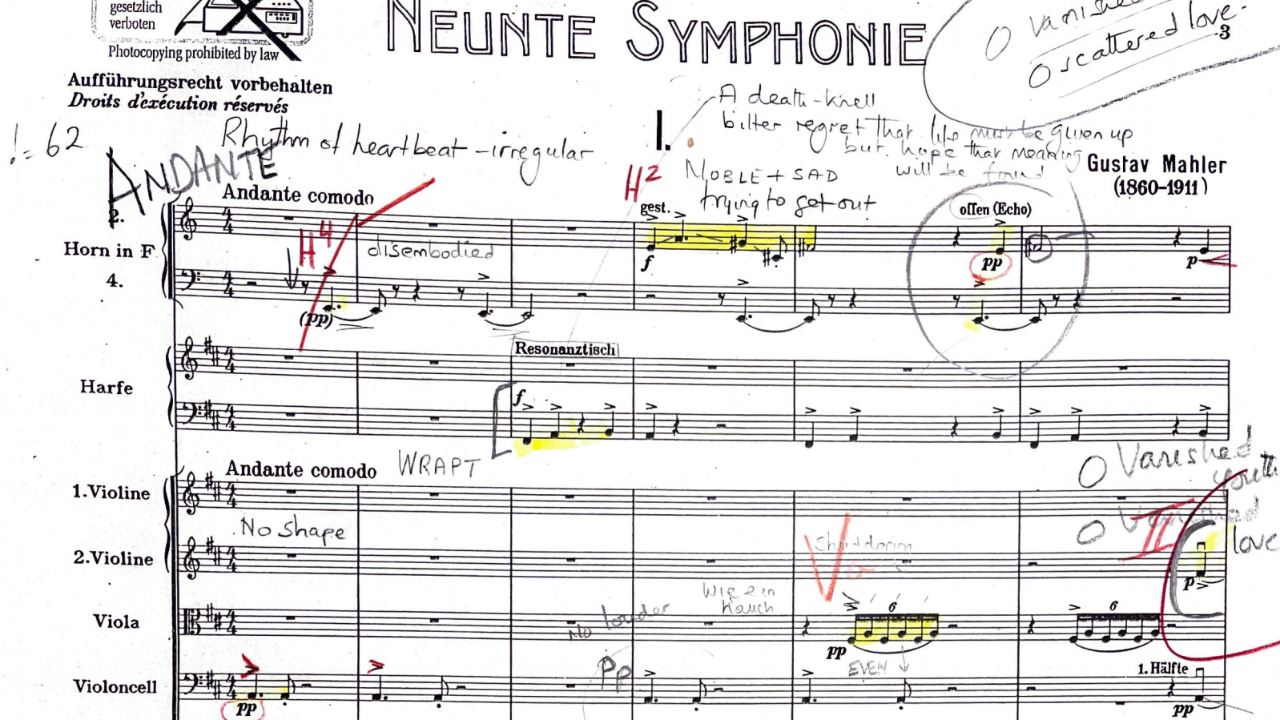
Click here to watch a video of the class
NEVER AGAIN WOULD BIRD’S SONG BE THE SAME
He would declare and could himself believe
That the birds there in all the garden round
From having heard the daylong voice of Eve
Had added to their own an oversound,
Her tone of meaning but without the words.
Admittedly an eloquence so soft
Could only have had an influence on birds
When call or laughter carried it aloft.
Be that as may be, she was in their song.
Moreover her voice upon their voices crossed
Had now persisted in the woods so long
That probably it would never be lost.
Never again would birds’ song be the same.
And to do that to birds was why she came.
— Robert Frost
Robert Frost: Never Again
An analysis by Neil Rubenstein
This is a late sonnet by Frost, and it re-fashions the story of Eden in such a way that Eve becomes a type of heroine rather than a temptress. She is said, through the charm of her speech, to have affected the song — the music — of all the birds in Eden’s garden, so that everything was forever changed. The speaker acknowledges at moments that this was admittedly difficult to achieve, although it “probably” occurred. In spite of these occasional hesitancies, however, the poet is in the end unequivocally assertive: “Never again would bird’s song be the same.” Why this happened, and what it meant, are ultimately left for the reader to discover.
Even Adam’s first line is temporized:
“He would declare and could himself believe,…”
Nothing is definitively stated here: he “would declare” but he does not say that he actually believed what he said — only that he “could” believe it, depending perhaps on the circumstances. So from the poem’s very beginning there is an element of uncertainty, of equivocation — although it seems less like a serious undercutting of the speaker, than something more deliberately artful and perhaps even playful.
Since the sonnet is about song; about voices crossing; and about music, it is important to notice that Frost — even at the very beginning — is alerting us to the word-play and sound-effects that are central to the meaning of his poem. For instance, we may not at first notice that — in the first line — the word “would” rhymes with “could;” that “de-” rhymes with “He,” “be-” and “lieve”; and that the final word in each half-line has a long vowel introduced with the letter “l”: “lāre” and “liēve.” Finally, “lieve” rhymes with Eve, the major figure in the sonnet. So we have, already, a vivid sense of how Frost may use the sound-effects in his work to signify — and in effect render — the words of Eve as they alter the song of the birds.
In the next lines, we have additional statements that may challenge credulity, along with word-play and harmonious sounds that are marvelous in their ingenuity and musicality:
That the birds there, in all the garden round,
From having heard the daylong voice of Eve
Had added to their own an oversound,
Her tone of meaning, but without the words.
The song of the birds is said to have been altered profoundly, from having heard the “daylong voice of Eve” and — most important — “her tone of meaning.” That tone is not defined, at least not yet, but there is more to come in subsequent lines. Meanwhile, the reader can begin to trace additional word-patterns here, although we should also notice the metrics and rhythms. To be experienced in all their subtle variation, the lines should be read aloud several times, noticing how each line, half-line, word, and syllable is varied as we move ahead:
Hĕ wòuld dĕcláre,/ ănd còuld hĭmsélf bĕliéve,
Thăt thĕ bírds thère/ ĭn áll thĕ gardĕn róund,
Frŏm hávĭng héard/ thĕ dáylòng vóice ŏf Éve
Hăd áddĕd tŏ thĕir ówn/ ăn óvĕrsoúnd,
Hĕr tóne ŏf méanĭng/ bŭt wĭthóut thĕ wórds.
As for sound patterns, the “clare” (of declare) rhymes with “there” in the second line, and we can then see how it is joined by “their” two lines later. Then we have the repeated “r, n, d” sounds in “birds, garden, round, heard, sound” — not to mention the repeated sprinkling of “r’s” in “-clare, their, there, birds, over, her, words” — and so on. Finally, there are the important internal rhymes (quite apart from the dominant end-rhymes):
“ówn/ó-ver/tóne//Hád/ádded//bírds/wórds.”
If we pay subliminal attention to all of this as we read, we hear a rare music of vowels and consonants, stresses, varied pauses and then swifter movements; rhythms playing off against meters; rhymes and half-rhymes that only a master like Frost can create. Speak the words over again, listening for all the variations, and we can almost forget — momentarily — the “sense” as we hear the vocables and experience the rhythmic movements. The point of all this is not simply to demonstrate the writer’s capacity for poetic dazzle, but rather to express the very meaning of the poem: a human voice mingles indissolubly with the song of birds; and the two together create an inimitable vocal music that is the poem itself. The sonnet’s reverberations are an analogue or metaphor for the intonations of the birds, crossing with the “daylong voice of Eve,” and creating something rich with new meaning.
At this point, we might well ask if all this word and rhythmic play is really intended. Did the poet actually mean all of this, or is it mainly an accident, and are we reading too much into it? To which we must answer: did Debussy or Ravel always consciously intend which notes, keys, tempi, chords, harmonic sounds and repetitions they were creating or producing, even though we can in fact discover meaningful patterns when we analyze their “tonal music”? The answer, of course, is that a mixture of talent or genius, plus skill, practice, knowledge, intuition, and intensity of concentration — in the hands of a master — can over time produce miraculous effects that somehow fuse intention, craft, and expression in ways that make perfect “sense,” and that emerge from a lifetime of continuously practicing an art that is one’s constant vocation.
At this point in Frost’s poem, we are bound to think that the poet’s fable is transparently far-fetched. The latent ambiguities in the very first line seem to have been stretched to a charming break-point in this cunning home-spun tall tale. The poet, however, anticipates our potential doubt and suggests our credulity may indeed be strained:
Admittedly an eloquence so soft
Could only have had an influence on birds
When call or laughter carried it aloft.
Be that as may be, she was in their song.
“Admittedly” signals that Frost is aware of the fact that Eve’s voice could scarcely — if at all — have been heard by the birds, but he suggests that it may have had its effect when “call or laughter” carried it “aloft.” We learn in addition that Eve had an “eloquence so soft”: so her calls, laughter, soft eloquence and “tone of meaning” are now identified as the elements that are said to have intermingled with the song of the birds. We ourselves may wonder and even doubt the “intermingling,” but the speaker insists:
Be that as may be, she was in their song.
Indeed, her voice “crossed” upon that of the birds so often that “probably it never would be lost,” The “probably” is then dismissed, just as previous concessions have been:
Never again would birds’ song be the same,
And to do that to birds, was why she came.
These final declarations are unqualified, and Frost contrasts the rhythm and emphases of each of these last two lines, while also placing the word “birds” at exactly the same central point in each line of the couplet. Most significant, however, is the statement that Eve’s very purpose in coming to the garden — to life itself — was not directly related to Adam; instead, she arrived “to do that to birds.” In effect, her appearance transformed, in the symbol of the birds, all of nature itself. She has brought sensuousness and a novel form of song or music to everything that exists, and to all that the garden — and the world itself — lacked.
In this sense, the sonnet (in Shakespearean form) is seen to be a love poem that celebrates Eve in the unique way that Frost intended. Indeed, the poem was written late in life, for someone Frost loved, and whom he chose to praise in terms that were oblique, delicate and poetic in their quintessential musicality. A miniature masterpiece is the final result. The music of Eve’s tone; of the birds’ song; and of the sonnet’s rhythmic and vocal effects are all fused into a single mode of expression, bringing something new and inimitable into the universe.
**********
Mahler Symphony No. 9 in D Major
Follow the score:

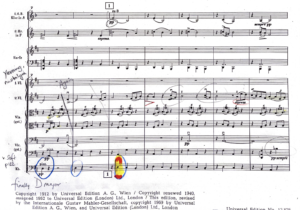
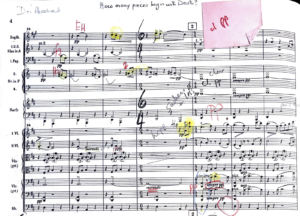
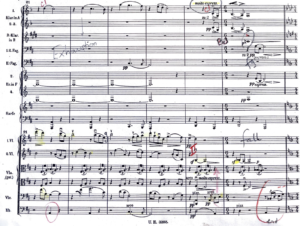
Philharmonia Orchestra
Mov. 1| Mov. 2 | Mov. 3 | Mov. 4
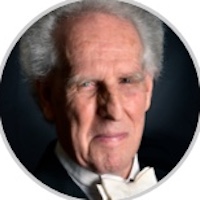 Benjamin Zander
Benjamin Zander